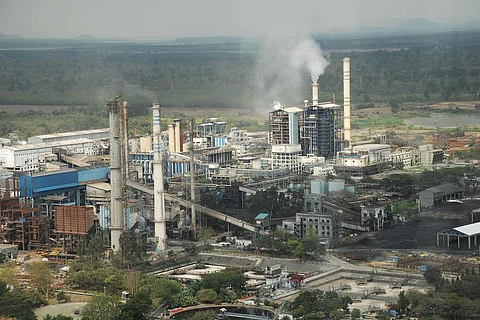

Air pollution in the cities of Hyderabad and Bengaluru worsened in 2021 with the PM2.5 annual average air pollutant levels increasing in both the cities. Hyderabad saw a 13.5 per cent increase in PM2.5 concentration in 2021 at 39.4 µg/m3, up from 34.7 µg/m3 in 2020. In Bengaluru, the PM2.5 concentration in 2021 saw a 5.4% increase at 29 µg/m3, up from 27.5 µg/m3 in 2020.
Meanwhile, New Delhi has been ranked the world's most polluted capital city for the fourth consecutive year followed by Dhaka (Bangladesh), N'Djamena (Chad), Dushanbe (Tajikistan) and Muscat (Oman). Of the 15 most polluted cities in Central and South Asia in 2021, 12 were in India. New Delhi saw a 14.6 per cent increase in PM2.5 concentration in 2021 at 96.4 µg/m3, up from 84 µg/m3 in 2020. India also continues to feature prominently among the most polluted cities - with 35 of the top 50 most polluted cities being in India.
These facts came to light on Tuesday in the 2021 World Air Quality Report according to which only three per cent of cities and no single country has met the latest WHO PM2.5 annual air quality guidelines. The report analyses PM2.5 air pollution measurements from air monitoring stations in 6,475 cities in 117 countries, regions and territories.
The annual PM2.5 concentration averages in 48 per cent of India's cities, exceeded 50 µg/m3 or more than 10 times the World Health Organization's (WHO) air quality guidelines. “Alarmingly, in 2021, NONE of the India cities met the prescribed World Health Organization (WHO) standards of 5 µg/m3,” the report stated.
Crop burning is common in India, especially in the rice farms near Delhi during the winter months. During crop burning season, smoke is responsible for up to 45 per cent of pollution in the city, the report said.
In 2019, India’s Ministry of Environment, Forest and Climate Change (MoEF&CC) enacted the National Clean Air Program (NCAP). The plan seeks to reduce PM concentrations by 20% by 2024 in all identified non-attainment cities, increase air quality monitoring, and implement a city, regional, and state-specific clean air action plan as well as conduct source apportionment studies, the report said.
However, the lockdowns, restrictions, and resulting economic downturn due to the COVID-19 pandemic have made it difficult to determine the plan’s impact based on air pollution levels alone. A recent report found that apart from city-specific action plans, no other plans have been formulated under NCAP prescribed timelines. This indicates the slow progress of NCAP which is a crucial program to achieve India’s clean air dream. Additionally, there is little information about the activities related to the NCAP, making it difficult to dispel the public’s dissatisfaction with the slow progress under the program, the report added.
IQAir's 2021 World Air Quality Report is the first major global air quality report based on updated annual WHO air quality guidelines for PM2.5. The new guidelines were released in September 2021 and cut existing annual PM2.5 guideline values from 10 µg/m3 to 5 µg/m3.
Fine particle pollution, known as PM2.5, is commonly accepted to be the most harmful, widely-monitored air pollutant and has been found to be a major contributing factor to health effects such as asthma, stroke, heart and lung diseases. PM2.5 leads to millions of premature deaths every year.
Commenting on the IQAir recent data, Avinash Chanchal, Campaign Manager at Greenpeace India said: “The report is a wake up call to governments and corporations. It is once again highlighting that people are breathing dangerously polluted air. Vehicular emissions are one of the major contributors to urban PM2.5 concentrations. With annual vehicle sales in India expected to increase, it is certainly going to impact air quality if corrective measures are not taken in time.”
“Air pollution has a massive impact on human health and is a major indicator of the accelerating climate catastrophe. It is high time that governments promote renewable energy for transportation and build infrastructure that encourages cycling, public transport and pedestrians,” he added.
With IANS inputs